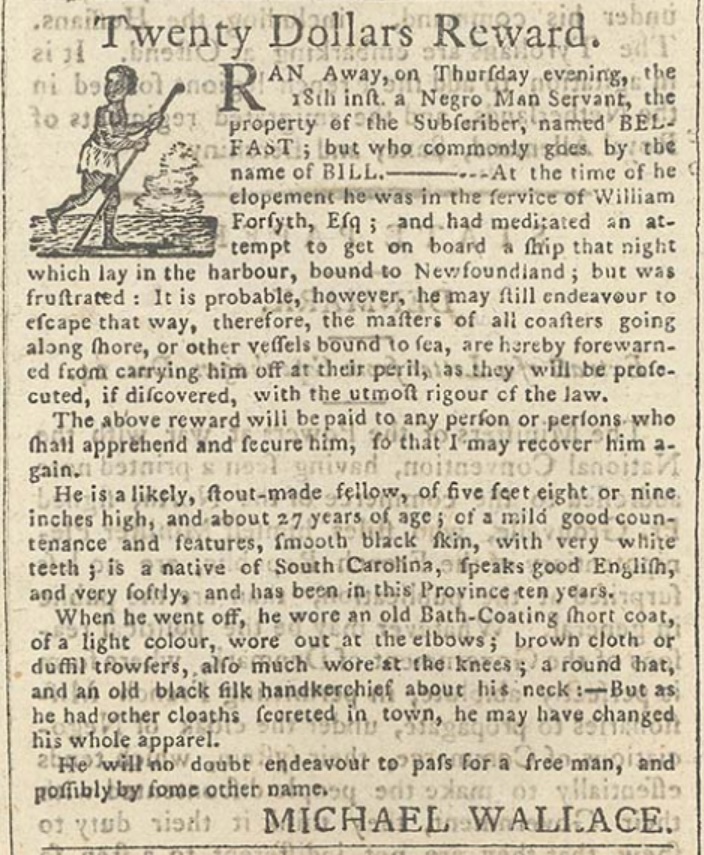Did you know Black slavery existed on this Island for nearly 100 years? Today we’re sharing the story of PEI’s history with slavery in recognition of Emancipation Day – which marks the abolition of enslavement in many British colonies.
Black slavery first appeared in the early 1700s. Between 1732 and 1749, Jean-Pierre Roma, who established the settlement of Three Rivers (near modern-day Georgetown) owned 12 slaves, making him the largest slave owner on the Island.
This photo, although not from PEI, shows an advertisement placed by Michael Wallace. He sent out a a $20 reward for anyone able to find Bill, an enslaved person who ran away in 1794.
Image credit: Nova Scotia Archives Weekly Chronicle 15 March 1794 p. 1 (microfilm no. 8165).
Image credit: Nova Scotia Archives Weekly Chronicle 15 March 1794 p. 1 (microfilm no. 8165).
In 1781, Governor Walter Patterson introduced legislation regulating slavery on the Island, a law that paralleled statues seen in plantation states such as Virginia. Patterson hoped it would attract Loyalist settlers with enslaved people to settle on PEI.
Black enslaved people were slowly liberated between 1790 and 1810, as a result of changing social and religious perspectives. The official abolition of slavery on PEI happened in 1825, although by that time there were no enslaved people.
Slavery was not abolished in Britain & its possessions until 1834, so PEI was 8 years ahead of its time.
However, enslaved people who were liberated were given no compensation for their unpaid labour, no voting rights, no court representation, and most were unable to own land.
However, enslaved people who were liberated were given no compensation for their unpaid labour, no voting rights, no court representation, and most were unable to own land.
Harvey Amani Whitfield wrote that “the discrimination black Islanders faced in judicial decisions and other ways after the decline and disappearance of slavery underlines the failure of emancipation to bring equality to local people of African descent.”

 Read on Twitter
Read on Twitter


